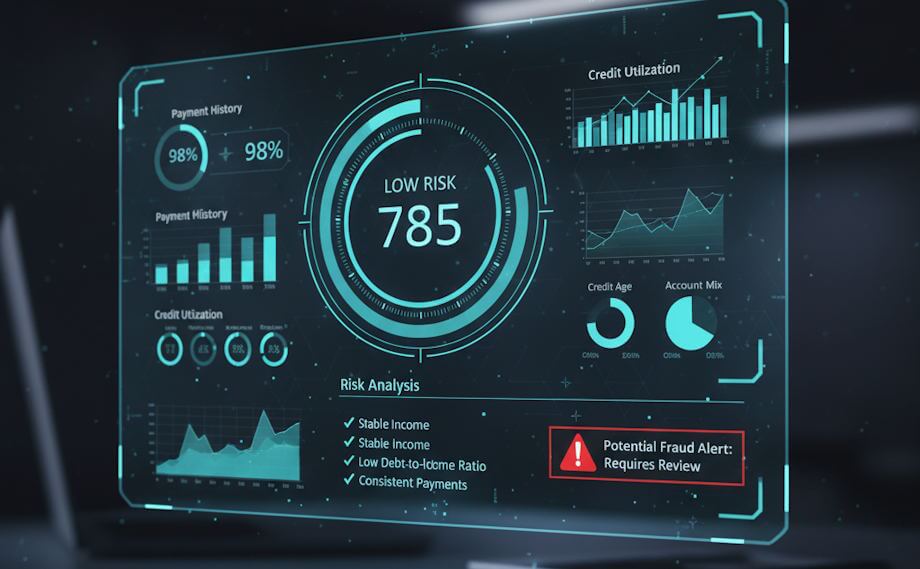Modern Credit Risk Management: Balancing Automation and Human Judgment

In today’s fast-paced financial world, credit risk management has become more complex than ever. Banks, lenders, and fintech platforms are facing the challenge of evaluating millions of borrowers with varying financial behaviors, while keeping regulatory compliance and customer experience in check. As artificial intelligence and machine learning revolutionize financial decision-making, one key question emerges: how much should we rely on algorithms, and how much on human expertise?
The Shift Toward Automation
Over the past decade, automation has redefined how financial institutions assess creditworthiness. What once took days or weeks can now happen in seconds. Advanced algorithms analyze massive datasets, from income patterns to spending behaviors, offering insights that traditional credit models could never reach.
Automated credit scoring systems now draw data from multiple sources—transaction histories, social behavior, and even mobile phone usage—to generate a more comprehensive picture of a borrower’s risk. For lenders, this means faster approvals, reduced operational costs, and the ability to reach underserved populations who lack traditional credit histories.
Key Benefits of Automation
- Speed: Instant credit decisions and streamlined workflows.
- Consistency: Reduced subjectivity in risk assessment.
- Scalability: Ability to process thousands of applications simultaneously.
- Inclusivity: Better access to credit for non-traditional borrowers.
However, while automation offers impressive efficiency, it is not without limitations. Algorithms can be powerful but also fallible—especially when they rely on incomplete or biased data. Even a perfectly coded model can make wrong assumptions about human behavior.
At the same time, financial institutions should focus on helping individuals strengthen their financial profiles. Consumers who have faced setbacks or damaged credit histories can take steps to Restore your credit health through structured repayment, education, and professional support. By empowering individuals, lenders not only reduce portfolio risk but also foster long-term trust.

Where Human Judgment Still Matters
Despite technological progress, human intuition remains a crucial component of credit risk management. A skilled credit officer can identify nuances that an algorithm might miss—such as temporary income disruptions, local economic factors, or personal circumstances behind a missed payment.
For example, an AI-driven system might flag a small business as “high risk” because of fluctuating revenue, while a human analyst could recognize seasonal trends and adjust the assessment accordingly. This human element prevents overreliance on rigid data points and allows for fairer, more context-aware decisions.
Human Oversight Adds:
- Empathy: Understanding borrower intent and personal situations.
- Ethical judgment: Evaluating cases beyond what data alone can reveal.
- Adaptability: Adjusting to new economic realities and market conditions.
- Bias correction: Spotting algorithmic blind spots or unfair patterns.
The Need for a Balanced Approach
The future of credit risk management is not about choosing between automation and human judgment—it’s about finding the right balance. Automation can efficiently handle data-heavy analysis, while humans bring context and critical thinking. When combined, they form a hybrid model that enhances both accuracy and fairness.
For instance, an AI system can pre-screen applications and flag anomalies, while credit analysts review complex cases that require interpretation. This partnership minimizes human error and ensures that data-driven decisions remain transparent and ethical.
Strategies for Effective Integration
- Develop Transparent Models: Ensure algorithms are explainable and auditable.
- Train Teams Continuously: Combine data literacy with traditional credit expertise.
- Monitor Bias: Regularly test algorithms for fairness and inclusivity.
- Use Data Responsibly: Protect customer privacy and comply with regulations like GDPR.

The Ethical Dimension of Automation
One of the biggest challenges in automating credit risk assessment lies in maintaining fairness. Algorithms learn from historical data, which may reflect past discrimination or economic inequality. Without human oversight, these biases can persist or even amplify.
Ethical credit risk management means designing systems that promote financial inclusion, not exclusion. It involves setting boundaries for what data can be used, ensuring transparency in decision-making, and giving borrowers the right to understand and contest credit decisions.
Principles of Ethical AI in Credit Scoring
- Transparency: Clear explanation of why a loan was approved or denied.
- Accountability: Human teams must remain responsible for automated outcomes.
- Fairness: Preventing algorithmic discrimination against vulnerable groups.
- Security: Protecting sensitive customer information at every stage.
Looking Ahead: The Future of Credit Risk Management
As technology evolves, the line between automation and human judgment will continue to blur. Predictive analytics, blockchain, and real-time data integration will make credit risk assessment more precise and dynamic. Yet, even in a world powered by AI, human insight will remain indispensable.
The financial leaders of tomorrow will be those who embrace both technology and empathy—using automation as a tool, not a replacement. This mindset will lead to better risk management, stronger customer relationships, and a more inclusive financial system for all.
